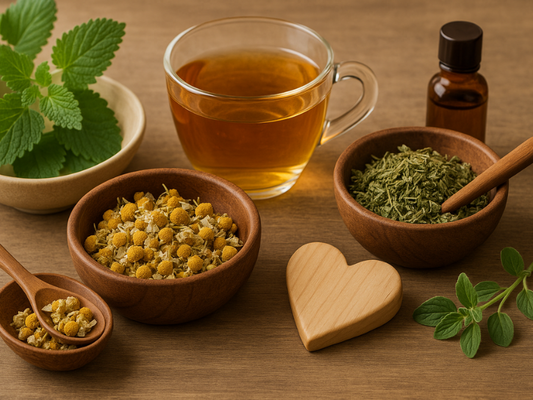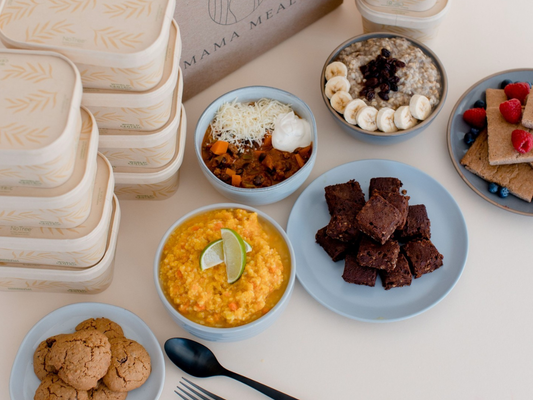
How to Reduce Microplastic Exposure in Your Kitchen
The Hidden Risks of Plastic in Your Daily Routine—and How to Make Safer Swaps
A Simple Habit with Unexpected Consequences
There’s nothing like a warm cup of tea to start your morning or wind down in the evening. It’s a ritual many new moms cherish—a moment of stillness amidst the chaos of motherhood. But what if your soothing cup of tea was also exposing you to billions of microplastic particles?
At MotherBees, we understand the importance of nourishing your body with safe, clean ingredients, especially during the postpartum period. That’s why we’re committed to sharing knowledge and providing sustainable alternatives that support your well-being. One of the simplest yet most impactful swaps you can make? Choosing a plastic-free lifestyle, starting with your kitchen.
Microplastics in Everyday Items—A Hidden Contaminant
Microplastics have infiltrated nearly every aspect of modern life, from food packaging to drinking water. A single plastic-based tea bag can release approximately 11.6 billion microplastics into your tea. This shocking finding, shared by Dr. Mark Hyman, highlights how common household products contribute to microplastic exposure without us even realizing it.
Many tea bags, especially those marketed as "silky" or "pyramid-shaped," are made from PET (polyethylene terephthalate) or nylon—materials that break down under high temperatures and release microplastics directly into your drink. Even some high-end tea brands use plastic packaging under the guise of luxury, making it difficult for consumers to discern truly sustainable choices.
But it doesn’t stop at tea. Microplastics are hidden in so many kitchen essentials, including food storage containers, utensils, cutting boards, and even cleaning supplies. When plastic is exposed to heat, acidity, or repeated use, it sheds tiny plastic particles into your meals. Water bottles, plastic wrap, and even dish sponges can be sources of microplastic contamination.
Research suggests that these tiny particles are not only present in our digestive systems but can enter our bloodstream, lungs, and even placenta. For new moms, minimizing exposure is an essential step toward creating a healthier home for themselves and their little ones.
The Growing Concern: Microplastics in Our Bodies
A 2019 study, titled "Plastic ingestion by people could be equating to a credit card a week," commissioned by the World Wildlife Fund (WWF) and conducted by researchers at the University of Newcastle in Australia estimated that the average person could be ingesting approximately 5 grams of microplastics per week—roughly the size of a credit card.
These tiny plastic particles enter the human body through various sources, including food such as seafood, salt, and honey, as well as through bottled and tap water and even the air we breathe.
While the full extent of their impact on human health is still being studied, researchers have raised concerns about potential risks, including chronic inflammation, disruption of gut microbiota, and the accumulation of toxic chemicals in the body over time.
As microplastics accumulate in our systems, they may contribute to long-term health issues such as hormonal imbalances, metabolic disorders, and immune system dysfunction. This makes it even more urgent to reduce exposure where possible, starting with the products we use daily.
Building a Plastic-Free Kitchen
Transitioning to a plastic-free kitchen doesn’t have to be overwhelming. Here are some simple yet effective swaps you can make.
Choose Loose Leaf Tea and Natural Tea Bags

Opt for organic loose leaf tea instead of pre-packaged tea bags. If you prefer the convenience of tea bags, look for those made from organic hemp, cotton, or plant-based fibers, avoiding those containing BPA, phthalates, and polypropylene. This small switch ensures that your cup of tea nourishes you without unnecessary plastic exposure.
Use a Stainless Steel or Glass Strainer

A simple swap like using a stainless steel or glass tea strainer can significantly reduce microplastic exposure. Unlike plastic strainers or infusers, these materials are durable, safe, and easy to clean. Plus, they elevate your tea-drinking experience with a cleaner, more natural taste.
Store Food in Glass or Stainless Steel

Plastic containers, even those labeled BPA-free, can still release microplastics over time. Choose glass or stainless-steel storage for food and drinks to keep your meals fresh and toxin-free. Investing in airtight glass jars or stainless-steel bento boxes is a practical way to ensure your food remains uncontaminated.
Make the Switch to a Recyclable Mesh Produce Bag

One of the most versatile and sustainable kitchen tools is a recyclable mesh produce bag. Unlike plastic bags that trap moisture and cause produce to spoil quickly, mesh bags allow for better air circulation, keeping fruits and vegetables fresh longer. Beyond grocery shopping, these bags are excellent for straining broth, storing nuts and grains, or even as an eco-friendly way to carry snacks. Plus, they reduce single-use plastic waste, helping to lower your environmental footprint.
Use Compostable or Reusable Alternatives for Kitchen Cleaning

Ditch synthetic sponges and plastic-based scrubbers in favor of loofah sponges or compostable dish brushes. Reusable paper towels made from bamboo or cotton are also a great swap to reduce waste and avoid microplastic contamination from disposable wipes. These natural materials are biodegradable and work just as effectively—if not better—than their plastic counterparts.
A More Nourishing, Sustainable Future

Every small change you make adds up. Choosing plastic-free alternatives, investing in sustainable kitchen tools, and being mindful of microplastics help create a healthier home for you and your family.
We believe in nurturing through intention—whether it's the food we prepare, the products we use, or the choices we make daily.
You deserve to feel your best, and so does your family. By taking steps to reduce microplastics, you’re not just protecting your health—you’re making a difference for future generations and the planet.
At MotherBees, we are committed to supporting you on this journey. Our Sustainable Living Collection is carefully curated to help you make meaningful swaps without sacrificing convenience or quality. Every product is designed with intention—made from natural, safe materials that nourish your home and the environment.
Let’s build a more sustainable, nourishing world—one simple swap at a time.












